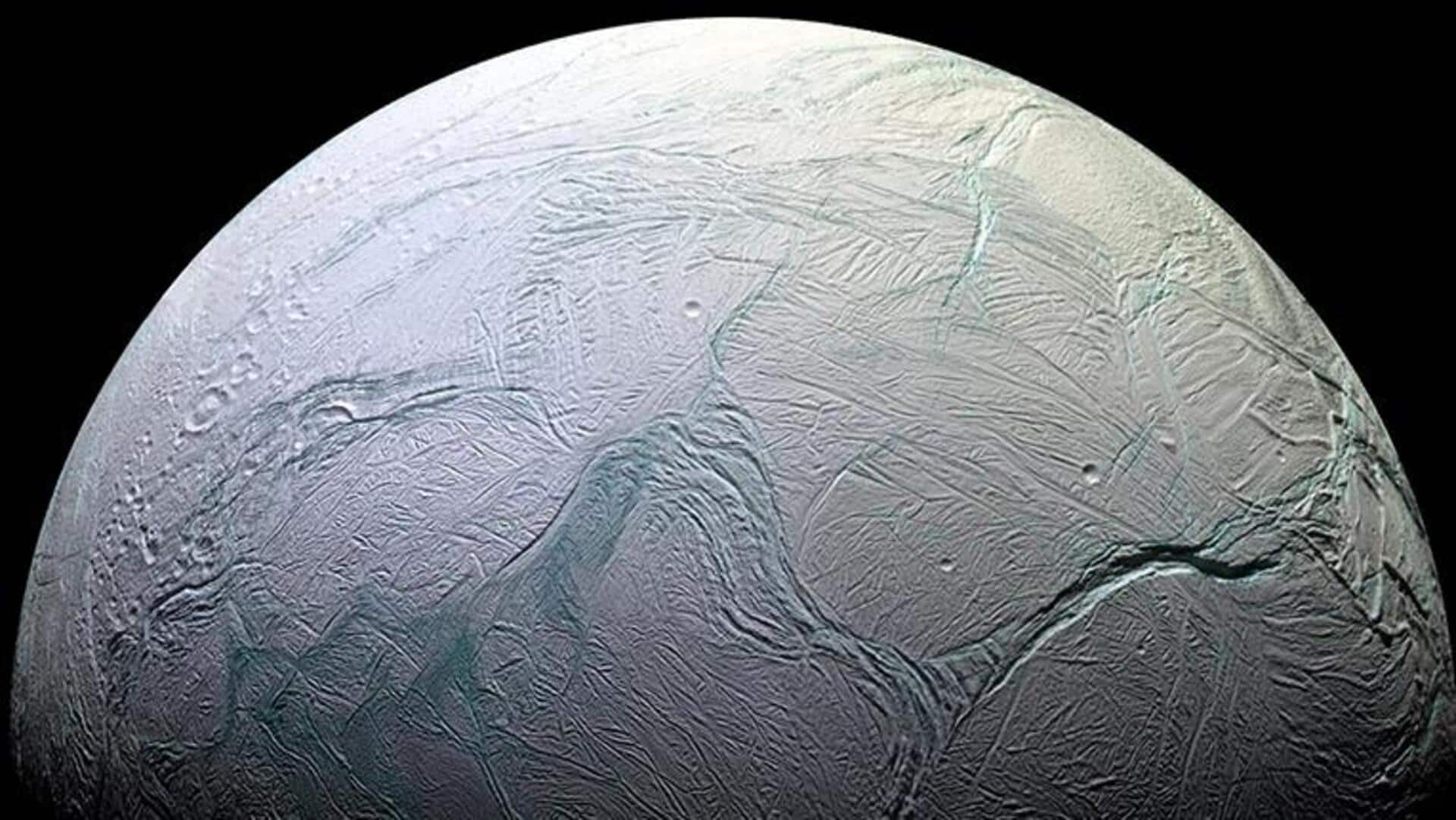
NASA's Webb spots giant vapor plume on Saturn's moon Enceladus
What's the story
Researchers using NASA's James Webb Space Telescope have mapped a massive plume of water vapor arising from Saturn's moon Enceladus. This stream, jetting out from the south pole, was found to be more than 20 times the size of the moon, spanning over 9,656km. This latest Webb finding once again sparks conversation about the possibility of life beyond Earth. Here's why.
Context
Why does this story matter?
The Webb telescope, which is located 1.5 million km from Earth, is equipped to see in longer wavelengths of light which makes it more sensitive. While previous telescopes have captured water plumes emanating from Enceladus, Webb is providing new insights to astronomers. In the coming years, Webb will serve as a "primary observation tool" for the satellite.
Enceladus
Enceladus has a salty ocean underneath its crust
Enceladus is considered "one of the most exciting scientific targets" in the solar system in the hunt for life beyond our own planet. Interestingly, between the moon's icy outer crust and its rocky core lies a salty ocean, where life may possibly exist. This small moon is about 4% the size of Earth, measuring approximately 500km across.
Evidence
Studies have suggested that Enceladus may be habitable
Recently a study, based on computer modeling, suggested that Enceladus's ocean could contain as much or more phosphorus than seas on Earth, suggesting that the alien world might be habitable. Phosphorus is a vital ingredient for life and it has been previously discovered that the moon's ocean holds other key life-supporting elements including carbon, hydrogen, oxygen, nitrogen, and sulfur.
Significance
The giant water plume may contain chemical ingredients of life
Coming back to the recently discovered water vapor plume on Enceladus, researchers theorize it could contain the chemical ingredients needed for life. Also, it is bigger than any of the previous water vapor emissions ever seen on the moon. Not just that, scientists are able to see "how this emission feeds the water supply for the entire system of Saturn and its rings."
Cassini
The vapor plume was jetting out at a fast rate
It is not just the length of the plume that has amazed scientists. The vapor was jetting out from the moon at a particularly fast rate, about 299 liters per second. For context, at this rate, one could fill an Olympic-sized swimming pool in just a few hours, whereas doing so with a garden hose on Earth would take more than two weeks.
Official words
The moon's water jets leave behind a "halo" in orbit
"The orbit of Enceladus around Saturn is relatively quick, just 33 hours," said Geronimo Villanueva, from NASA's Goddard Space Flight Center. "As it whips around Saturn, the moon and its jets are basically spitting off water, leaving a halo, almost like a donut, in its wake." "In the Webb observations, not only was the plume huge, but there was just water absolutely everywhere."
Explanation
Webb shows how water plumes feed the entire Saturnian system
This halo Enceladus leaves behind is called a 'torus,' which lies between Saturn's outermost and widest ring. For the first time, Webb's observations show how Enceladus's water plumes feed the entire Saturn system and its rings. Researchers determined about 30 % of water stays within this torus region, and the remaining 70% spreads out, supplying the rest of the Saturnian system with water.
Quote
'Webb will aid in studying Enceladus's underground ocean'
"Webb provides a unique way to directly measure how water evolves and changes over time across Enceladus' immense plume, and as we see here, we will even make new discoveries and learn more about the composition of the underlying ocean," added Stefanie Milam, from Goddard.